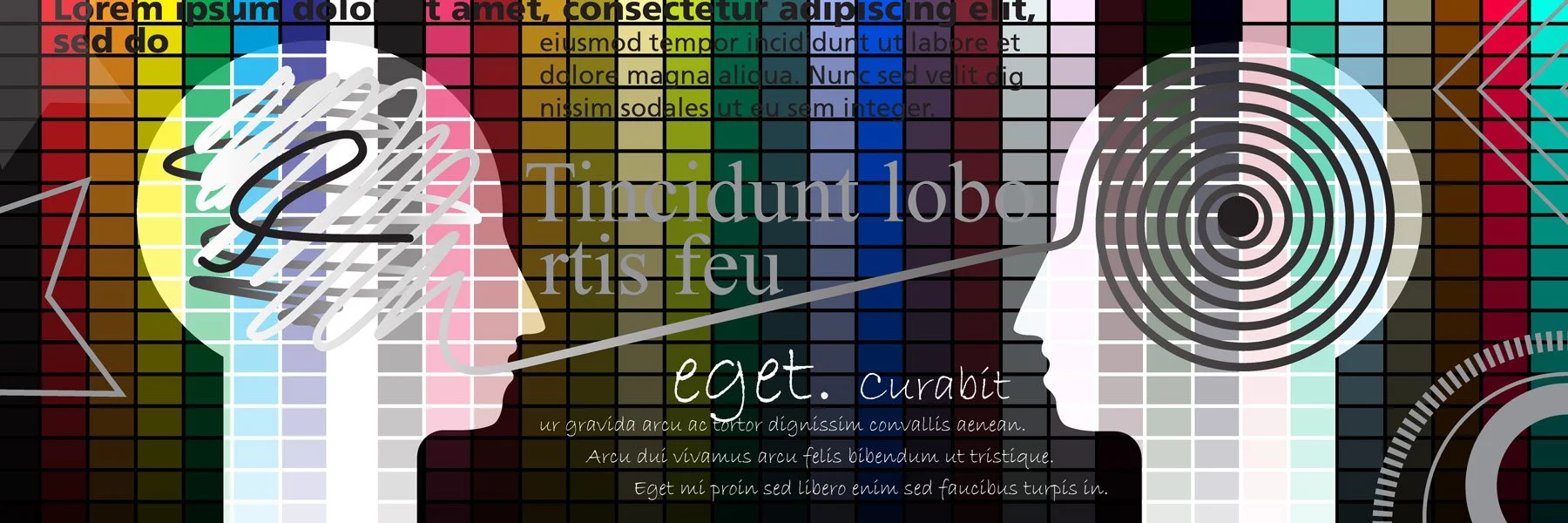Today's instructional design professionals are frequently expected to wear numerous hats. These can include skills built on-the-job, instead of during their degree program. In addition to a solid grounding in education learning models, psychology, neurology, stakeholder/SME interviewing, group discussion facilitation, and elearning technologies, IDs are now often asked to perform traditional graphic design tasks. They are even expected to elevate the courses they build aesthetically, but that can be a tall order. In fact, it's incredibly challenging for IDs who feel less confident with visual design and creativity to do this, even when they are outstanding researchers and content writers. This article can help you apply elearning graphic design principles like a pro.
Similarities and differences between graphic design and instructional design
Graphic designers and instructional designers are each tasked to deliver desired outcomes. Both types of designers translate abstract concepts and complex content into tangible materials for a target audience. Both types of designers also consider demographics, cultural backgrounds, mental bias and many other common factors as they perform their work. Therefore, the nuances between them typically have to do with formalized training and typical deliverables.
Instructional designers (IDs) help learners acquire knowledge, attitudes and skills. They do that by:
Clarifying the scope of learning for a given project or module series
Interviewing subject matter experts (SMEs) to gain insight on learner characteristics, skills to be learned, and obstacles to learning
Defining the learning objectives, then creating outlines or maps for each course
Extrapolating them into scripts and detailed design documents (DDDs)
Writing content, knowledge checks and tests, then sequencing in storyboards
Authoring courses so that they may be effectively delivered to the learning audience through the desired mode (ILT, vILT, LMS elearning, etc.)
Graphic designers (GDs) communicate ideas, feelings, and messaging visually. They do that by:
Clarifying the preferences and graphic requirements for a project or module series
Considering key influences on the visual aspect of materials, including organizational branding and other client priorities
Considering the emotional or intellectual aspects of content throughout the curriculum to align everything cohesively
Applying graphic standards, user interface characteristics and user experience traits from look & feel guidelines to generate templates, images and other objects needed for elearning courses
Collaborating with IDs to prepare, optimize, and output assets that can be integrated into the course materials
Elearning graphic design is a practice that merges and bridges these slightly different roles.
How does an instructional designer implement elearning graphic design?
As mentioned earlier, there is some functional cross-over between IDs and GDs. As you are building course materials or a series of elearning modules, be sure to answer these five vital visual questions:
What are the typographic aspects? That includes font names, font weights, font sizes, font spacing, line spacing, paragraph spacing, leading, kerning, styles, and more. If you are building an elearning course in Articulate Storyline, try to use fonts that are directly supported to avoid presentation problems later.
How are shapes used to communicate meaning or purpose? That includes basic things like type of shape: circle, square, triangle, arrow, etc. Also, proportion, frequency used, and relationship to written content. The human brain interprets shapes seen by the eyes before it interprets color. That’s why iconography so effectively distills greater meaning.
What colors should be used on different elements, and why? There are literally an infinite number of tones, tints and shades that can be used but that doesn’t mean they should be. Be consistent and try to limit your palette to 2-3 main colors to limit complexity.
How are images incorporated into screens and elements? Consider where one-color icons, multi-colored illustrations, and full-color photographs are used. Also, think about how they best support learning content, or if they are purely decorative and included for aesthetic purposes.
What is the proximity, relationship, spacing, and hierarchy of visual elements? A key part of elearning graphic design is laying out onscreen elements so that they present content clearly and avoid overwhelming the learner visually. Also, the distance between headings and other text content, spacing around images, and placement on screen each should be consistent to avoid any cognitive dissonance.
Answering these five key questions, then applying those standards throughout your coursework, will significantly improve the overall presentation of the content.
Use elearning graphic design to take your projects to the next level
Like most things, practice makes perfect when you are implementing elearning graphic design principles into your learning materials. Many professional graphic designers started out drawing, painting or doing collage when they were kids. Then they progressed over the decades, honing their craft into a trade. Some found the profession when they were in college, building competency across multiple print and digital mediums. Other graphic designers have become specialists on-the-job in certain areas like UI design, UX design, screen-printing, large format, game design, videography, and others. Still others have specialized in functional areas, like marketing design, brand & identify, or in this case, graphic design for learning. Regardless of graphic design flavor, the same principles apply across the field.
If you were a teacher before entering the instructional design field, remember what it was like being out of the classroom and building out your first online course during the Covid pandemic. Or maybe you started out in the human resources field as a generalist, but over time have done more and more instructional design to help ensure better compliance by your workforce. Whatever your educational or professional background is, and how you came into this field, remember that the objectives are still the same: effecting change in the learner. Creating the right level of engagement. Accurately testing competence. Avoiding confusion, abandonment or apathy.
This article is the first in our elearning graphic design series that explores how to use elearning graphic design to build better coursework and creatively deliver more impactful training, no matter what experience you have. Continue reading on this topic in eLearning Graphic Design, Part 2: How Shapes Are Used To Convey Meaning and Purpose.
Written by Jonathan Flieder and published in 2022.
Subscribe to our newsletter today to automatically receive the next issue in your email inbox.
Related Articles For Further Reading




